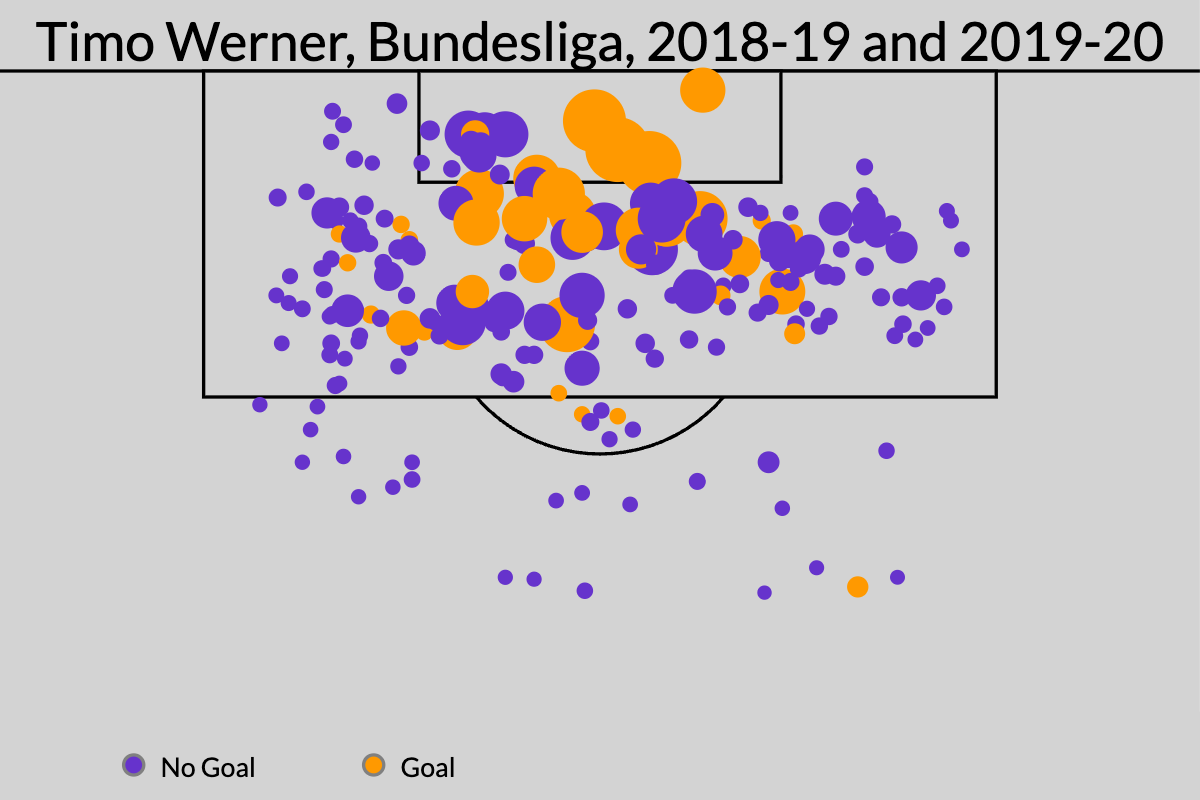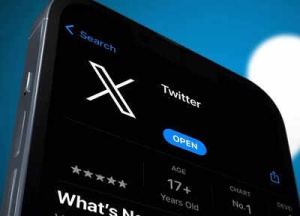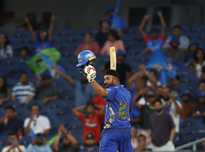Let's say that the average Premier League team makes around five major transfers per season. So, that's 100 transfers in the league per year, and 1,000 transfers per decade. Research has shown that only about 50% of new players start at least 50% of matches for their new clubs. If we use that low threshold as the standard for success, then over 10 years, about 500 new players succeed and 500 fail.
Though there are plenty of obvious, preventable reasons for many of those failures -- misidentifying a tactical fit, paying for past performance, ignoring which parts of a player's game are predictable, forgetting about age curves -- a lot of those players fail for reasons that nobody could've predicted.
You shouldn't be flipping a coin when you go into the transfer market, but even the savviest clubs can increase their chances for success by only another, say, 10% or 20%. The human experience, the sport of soccer, and the wider state of the world are all too complex and random for anyone to predict the outcome of every signing.
Given all of that, it makes sense that there would still be a lot of well thought out, value-driven, nicely executed transfers that still don't work. Good processes can lead to bad results, just like bad processes can lead to good results. So, with the transfer window only a few days from closing, let's look at some of the best transfers from the past 10 years that still failed.
This is the summer when it started. And by "it," I mean "Manchester United somehow turning everyone they signed into a zombified husk of their former selves."
At Southampton, Morgan Schneiderlin became arguably the best defensive midfielder in the Premier League. Though the club constantly changed personnel and managers during his years with the club, Southampton remained one of the best defensive teams in England because they had Schneiderlin at the base of midfield. He excelled no matter the tactics or his teammates, and he was still in the early years of his prime. He had just gone to the World Cup with France. This seemed about as sure of a thing as you could get.



Memphis Depay, meanwhile, was the hottest attacking prospect in the world, other than Raheem Sterling. He put up 39 goals and 11 assists in the Eredivisie before his age-21 season and was producing a ton of shots and creating a ton of chances from the wing -- right when wing attackers were about to become the most important players in the sport.
Within a year of signing, both players had left Manchester United.
Schneiderlin might've peaked early while at Southampton; he left United for Everton and was never close to the same player again. Memphis, meanwhile, never fulfilled his Ballon d'Or-level potential, but we can add him to the numerous players who were good before they got to United and after they left United.
At PSV Eindhoven, he averaged 0.79 non-penalty goals+assists per 90 minutes. At Lyon, his first club after leaving England, he put up 0.82 per 90. And in his two clubs after that, Barcelona and Atlético Madrid, he churned out attacking-contribution rates of 0.50 and 0.27, respectively.
At United? He scored two non-penalty goals and didn't register an assist in 1,500 minutes.
By the time Samuel Umtiti joined Barcelona, he had started 128 Ligue 1 matches at a position where players tend to peak a little later than anywhere else. Umtiti was 22 when he signed with Barca -- and he was only the 44th most expensive transfer of the 2016-17 season.
He was fantastic in the air, hard to get by on the ground, and one of the best in the world with the ball at his feet. The only concern was his height -- just a shade under 6 feet -- but Barcelona had a history of making it work with smaller center backs, and his success amid the physicality of the French league suggested those concerns were overblown.
Now, the move wasn't a total flop. He won multiple LaLiga titles at the club -- during an era when Real Madrid were winning the Champions League season after season. He was a Barcelona player when he was a starter on France's World Cup-winning team in 2018. But thanks to a succession of injuries and the growing dysfunction at the club, Umtiti played only 2,000 minutes in a season twice with Barcelona. He started 78 LaLiga matches over six seasons, and featured in just over 30% of the available minutes.
This was the season that broke the transfer window. Paris Saint-Germain did the unthinkable and paid Neymar's €222 million release clause with Barcelona. A teenager named Kylian Mbappé joined, too, for what was a fee north of €100 million.
In response, Barcelona dropped nine-digit fees on Borussia Dortmund's Ousmane Dembélé and Liverpool's Philippe Coutinho. Liverpool, then, broke the record fee for a defender by acquiring late-bloomer Virgil van Dijk for €84.65 million from Southampton. And elsewhere on Merseyside, Everton finalized what might be the worst transfer decision by any club: paying €49.4 million to acquire 27-year-old set-piece specialist Gylfi Sigurdsson from Swansea City.
Hidden among all of that, though, Leicester City seemed like they might be getting their post-title rebuild on track. After scuffling through the 2016-17 season without N'Golo Kanté and with the added stress of playing in the Champions League, the Foxes signed Kelechi Iheanacho, who looked like he might be a star striker for less than Everton paid to acquire Michael Keane.
Now, this wasn't a slam dunk -- Iheanacho started only 12 of the 46 matches he played in for City. And it was still a limited sample. But this was in two seasons before Manchester City became a super-team. And more importantly, he did all of this before he turned 20.
The move was well worth the risk, and it wasn't a failure. But perhaps because of the longevity of Jamie Vardy, Iheanacho remained the same player he was at City: a productive bench guy.
Over his six seasons with Leicester in the Premier League, he averaged about 0.70 non-penalty goals+assists per 90 -- a Champions League-starter-level rate. The main problem: He started an average of only 10 games per season.
This was the one major miss for Liverpool over the five-year stretch that built them back into being one of the best teams in the world. But Liverpool don't regret it.
With RB Leipzig, Naby Keïta was everything. In an era of increased pressing, he was one of the best midfielders in the world at receiving a pass, deking a defender, and turning upfield. His progressive passing was fantastic, and he was everywhere without the ball. Now, that would've been enough to make this move worth it, but he combined that with attacker-level scoring production. In his two seasons with Leipzig, Keita averaged 0.51 non-penalty goals+assists per 90 minutes.
The club considered him such a star-in-waiting that Liverpool agreed to his transfer the season before, but then let him stay at Leipzig for another year. Liverpool immediately won the Champions League in his first season with the club -- but he only started 16 league games, and that would be the high watermark for his five years at Liverpool.
Keita still had some fantastic moments with the club, and it's not a coincidence that Liverpool put up their two best two-front seasons -- 2018-19 and 2021-22 -- in the two seasons when he started 10-plus league matches. But ultimately, as Liverpool's former director of research Ian Graham has described it, Keita, who had no injury history, suddenly couldn't stop getting injured.
The dirty little secret about Tottenham Hotspur's run to the 2018-19 Champions League final is that, well, they weren't that good. They played much better in the loss to Liverpool than people expected, but in the league, Tottenham scraped by on a healthy mix of hot finishing from Son Heung-Min and Harry Kane, combined with some plain-old dumb luck.
They finished the season in fourth with a plus-28 goal differential. Except that was backed up by a plus-7.8 expected goal differential -- just the seventh-best mark in the league.
For most clubs, a deep run in a somewhat random knockout tournament, coupled with an unsustainable goal-scoring performance in the league, would lead to lots of bad decisions. Most clubs would think they were way better than they were. But this didn't seem to affect Spurs. Instead, they signed perhaps the two most exciting young midfielders on the market to overhaul a position group that started the Champions League final with Moussa Sissoko and Harry Winks.
Tanguy Ndombele was just 22 and had already started 60-plus games in Ligue 1. He was the rare midfielder who constantly pushed the ball forward, but rarely misplaced a pass. On top of that, he was also one of the better ball carriers at his position. No one would praise his defense, but he wasn't supposed to be a sieve, either. He did enough to make everything he did on the ball worth it.
Unfortunately, it didn't work like that. Both guys were tweeners -- meaning they weren't good enough defensively to play in a traditional midfield role, but they also weren't good enough around the penalty area to play as an attacking midfielder for a team that's trying to qualify for the Champions League every season. Between them, they broke the 15-start threshold in the Premier League just once, when Ndombele started 28 games for Jose Mourinho in 2020-21.
This kicked off what was a somewhat unlucky, lost era at the club. They made a bunch of sensible moves -- and they all failed. The same summer, Spurs signed Ryan Sessegnon, one of the most promising fullback prospects in world soccer, and Steven Bergwijn, a very productive young attacker for PSV Eindhoven. The next year, they signed Sergio Reguilon, another really promising young fullback, from Sevilla.
Fast-forward to today, and none of these guys are with the club.
Across the 2018-19 and 2019-20 seasons, only five players in Europe's Big Five top leagues generated at least 50 non-penalty expected goals and assists. There was Bayern Munich's Robert Lewandowski, Barcelona's Lionel Messi, PSG's Kylian Mbappé and Liverpool's Mohamed Salah -- four of the best attackers of the 21st century.
And then there was the guy who had a character named after him in a Bong Joon Ho movie because, as the Korean director and Tottenham super-fan put it, Timo Werner means "con man" in German.
Before Werner became a meme, he was one of the best attackers in Europe -- because he got on the end of great chances and because he finished them. Over that two-year stretch, only Lewandowski, Mbappe, and Messi scored more non-penalty goals than the German forward.

Joining Chelsea at 24, he was just entering his prime, and €53 million is nothing for a player with those numbers. Like any transfer, it was a risk, but it was a risk that any smart club with lots of money would've taken.
Obviously, it didn't work out, but he started and won a Champions League final; for a while, his pace in behind enabled Chelsea to play more conservatively and go on one of the better defensive runs we've seen. But ultimately, he scored only 10 goals in two Premier League seasons for Chelsea, and then after moving back to RB Leipzig for a few years, he added just two more goals in two seasons on loan with Tottenham. He's still only 29, but even his old club doesn't seem to want him.
For all the seasons FBref has tracked -- extending back into some point in the early 90s, depending on the competition -- four players have scored and assisted at least 80 goals before their age-21 season:
1) Kylian Mbappé: 108
2) Wayne Rooney: 86
3) Michael Owen: 85
4) Jadon Sancho: 83
No one else has more than 77, and if we strip out penalties, then Sancho moves ahead of Owen. So, Jadon Sancho is sandwiched between a guy who won the Ballon d'Or and one of the greatest English soccer players of all time. That €85 million fee was a lot of money in a vacuum, but below the market rate for a player with Sancho's elite early career performance.
Jan Aage Fjortoft believes a return to Borussia Dortmund would be a good move for Jadon Sancho.
There are lots of reasons it didn't work out -- Manchester United being a mess is one of them, as is Sancho's lack of athleticism getting exposed in the Premier League -- but the "what" of it all is that the shots disappeared and the passing dropped off. At Dortmund, Sancho attempted 2.23 shots per 90 minutes in his final season, while in the Premier League, he has averaged 1.18 per 90. And in his final Bundesliga season, he completed 3.58 passes into the penalty area per 90 minutes; that has fallen off to 2.14 in four Premier League seasons.
At 25, he's becoming a winger who can move the ball up the field at a steady clip, but creates next to nothing near the goal. It feels ridiculous to say it about a player who scored and created all those goals way before he entered his prime, but might it make sense for him to move back into the midfield?
This was the same year that Chelsea paid €121 million to acquire Enzo Fernández from Benfica. At 22, Enzo was two years older than Ryan Gravenberch -- and as of today, they're both two of the best midfielders in the Premier League.
Of course, Bayern Munich do not play in the Premier League, but this was a savvy move for a player who made over 60 Eredivisie starts before his age-20 season.
However, Gravenberch lasted only one season with Bayern, where he started three matches before moving to Liverpool, where he started 37 or 38 matches as the club won its 20th Premier League title last season. Bayern seemingly moved on from the young Dutchman because coach Thomas Tuchel didn't like him, while Liverpool signed him for Jurgen Klopp, but he didn't come into his own until Arne Slot took over the team. In short: Don't make major personnel decisions based on the whims of someone who might not be around in two years.
As you can probably understand from reading the previous entries, Gravenberch is the rare player who "failed" in the Bundesliga but flourished in the Premier League.
Michael Imburgio's DAVIES model compares players based on the roles they occupy, and then determines how much value they've provided compared with the baseline player in the same role. Among players who were 21 or younger when the season started, USMNT's Folarin Balogun's one-season loan with Stade de Reims in Ligue 1 ranks as the fifth-best performance since 2017. He added 8.65 goals compared with other players in the same role, based on everything he did on the ball.
The only players above Balogun: Kylian Mbappé three times and Vinícius Júnior once. The players immediately below him: Cole Palmer, Lamine Yamal, Erling Haaland and Bukayo Saka. Then, in the group behind, there's Federico Chiesa, Jude Bellingham, Rodrygo, Florian Wirtz and Xavi Simons. All of those players would've moved (and some did) for way more than what AS Monaco had to pay to get Balogun.
The "Futbol Americas" crew react to Folarin Balogun being dropped from the USMNT's Gold Cup squad following an ankle injury.
It's too early to say that this move "failed." But Balogun has just 11 goals in two Ligue 1 seasons, which means it certainly hasn't succeeded, either. Interestingly enough, Balogun's DAVIES numbers, per 90 minutes, at Monaco are quite similar to what he did at Reims -- the problem is he has played only 37.7% of the league minutes since joining his new club.
If he can get on the field consistently, I'd expect Balogun to have a breakout season. That's a big "if," though; he's injured and Monaco has a new, younger striker in Mika Biereth, who has 13 goals in his first 16 starts.
Two of the most in-demand positions/roles in the sport are left back and "goal-scoring winger." Left back is a specialized position that can be played only by a limited number of players, i.e., ones who are left-footed. And we've been over the goal-scoring-winger thing; these are the players who define the modern era of the sport.
Last year, Aston Villa got one of each for less than €70 million combined. At 22, Ian Maatsen had just started a Champions League final while on loan at Borussia Dortmund. And at 25, Donyell Malen had averaged 0.8 non-penalty goals+assists per 90 minutes across eight seasons in the Eredivisie and the Bundesliga. Even if you severely discounted those numbers because of league effects, €25 million for a guy who might give you 0.5 goals+assists per 90 minutes would be a steal.
Malen has given Aston Villa that, and lots more: 0.87 goals+assists per 90 minutes. It's just that he has barely played: only two starts in the Premier League since joining Villa in January.
It's roughly the same story for Maatsen. Based on the statistical player comps at FBref, his closest comp is ... PSG's Nuno Mendes. In other words, he's doing everything at an above-average rate. However, he started only 10 games last season and didn't get off the bench in Villa's opener against Newcastle.
Even if you sign the right players, it doesn't matter if they don't play.
Newer articles
Older articles
 Daren Sammy Fined, Handed Demerit Point for Umpire Criticism After Test Match Comments
Daren Sammy Fined, Handed Demerit Point for Umpire Criticism After Test Match Comments
 Gavaskar Calls for Yadav's Inclusion, Questions Middle Order After India's Test Defeat
Gavaskar Calls for Yadav's Inclusion, Questions Middle Order After India's Test Defeat
 Decoding Your Health: Spotting 5 Prediabetes Warning Signs Before a Blood Test
Decoding Your Health: Spotting 5 Prediabetes Warning Signs Before a Blood Test
 X Corp. Cracks Down: Half a Million Indian Accounts Suspended for Policy Breaches
X Corp. Cracks Down: Half a Million Indian Accounts Suspended for Policy Breaches
 Headline:
Early Warning Signs: 5 Heart Attack Symptoms to Watch Out For Weeks in Advance
Headline:
Early Warning Signs: 5 Heart Attack Symptoms to Watch Out For Weeks in Advance
 Facial Icing: Benefits, Risks, and Safe Application of This Viral Beauty Trend
Facial Icing: Benefits, Risks, and Safe Application of This Viral Beauty Trend
 Chess Sensation Praggnanandhaa Joins Magnus Carlsen's Team Liquid for Esports World Cup
Chess Sensation Praggnanandhaa Joins Magnus Carlsen's Team Liquid for Esports World Cup
 Mastering JPG to PDF Conversion: A Graphic Designer's Guide to Quality and Efficiency
Mastering JPG to PDF Conversion: A Graphic Designer's Guide to Quality and Efficiency
 MI New York's Tajinder Dhillon Shines: From IPL Benchwarmer to MLC Star
MI New York's Tajinder Dhillon Shines: From IPL Benchwarmer to MLC Star
 Akmal Blasts PCB's Interim Coach Choice: Ex-Cricketer Questions Logic Behind Mahmood Appointment
Akmal Blasts PCB's Interim Coach Choice: Ex-Cricketer Questions Logic Behind Mahmood Appointment